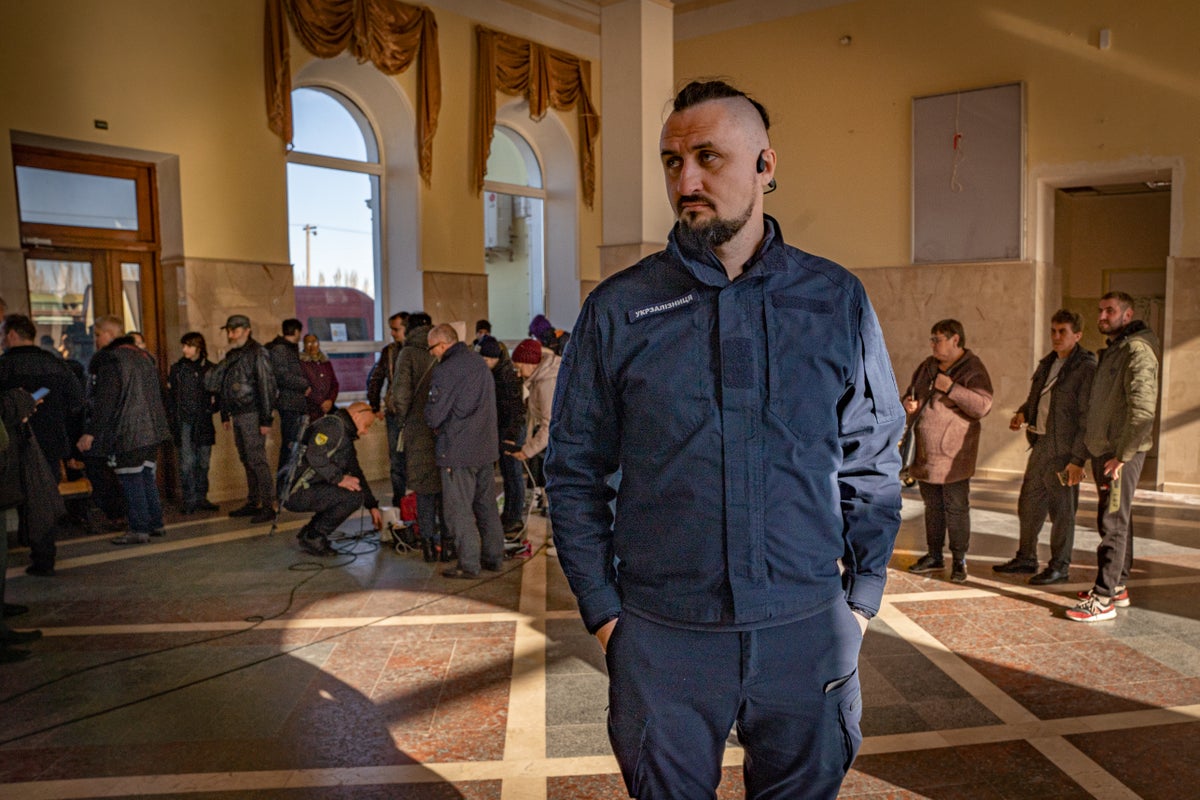
In most European countries, a wave of bad weather is enough to bring train schedules to a grinding halt. In the UK, leaves on the line cause chaos.
In Ukraine, where missiles, artillery fire and mines are everyday occurrences, railway staff simply carry on fixing the track and getting the trains running again. Even under shelling.
And this is the message that Ukraine’s railway chief, Oleksandr Kamyshin, is trying to deliver, as he stands in the newly reopened train station in Kherson, a frontline city liberated from Russian soldiers only a few days ago and still under fire.
The city was regained after Moscow ordered a withdrawal to the east banks of the river Dnipro. But the Russian troops haven’t gone far; at some points they are just 400 metres away on the other side of the water.
Ukrainian soldiers who liberated the area last week have told The Independent how civilians in Kherson have come under sniper fire. Shelling booms in the background.
But in the waiting room of Kherson’s passenger terminal, Kamyshin – the 38-year-old chief of Ukraine’s national rail company Ukrzaliznytsia – explains how the first trains will arrive here in just a week, ready to bring in food and aid as well as ferrying people away from the frontline.
The track from Kyiv to Mykolaiv, a city 100km west that has been under heavy bombardment, opened this week and the connection to Kherson will be made shortly.
“We are Ukraine’s second army; we have to keep running. Boots on the ground, that is our style,” says Kamyshin, as he directs a flurry of traffic around him.
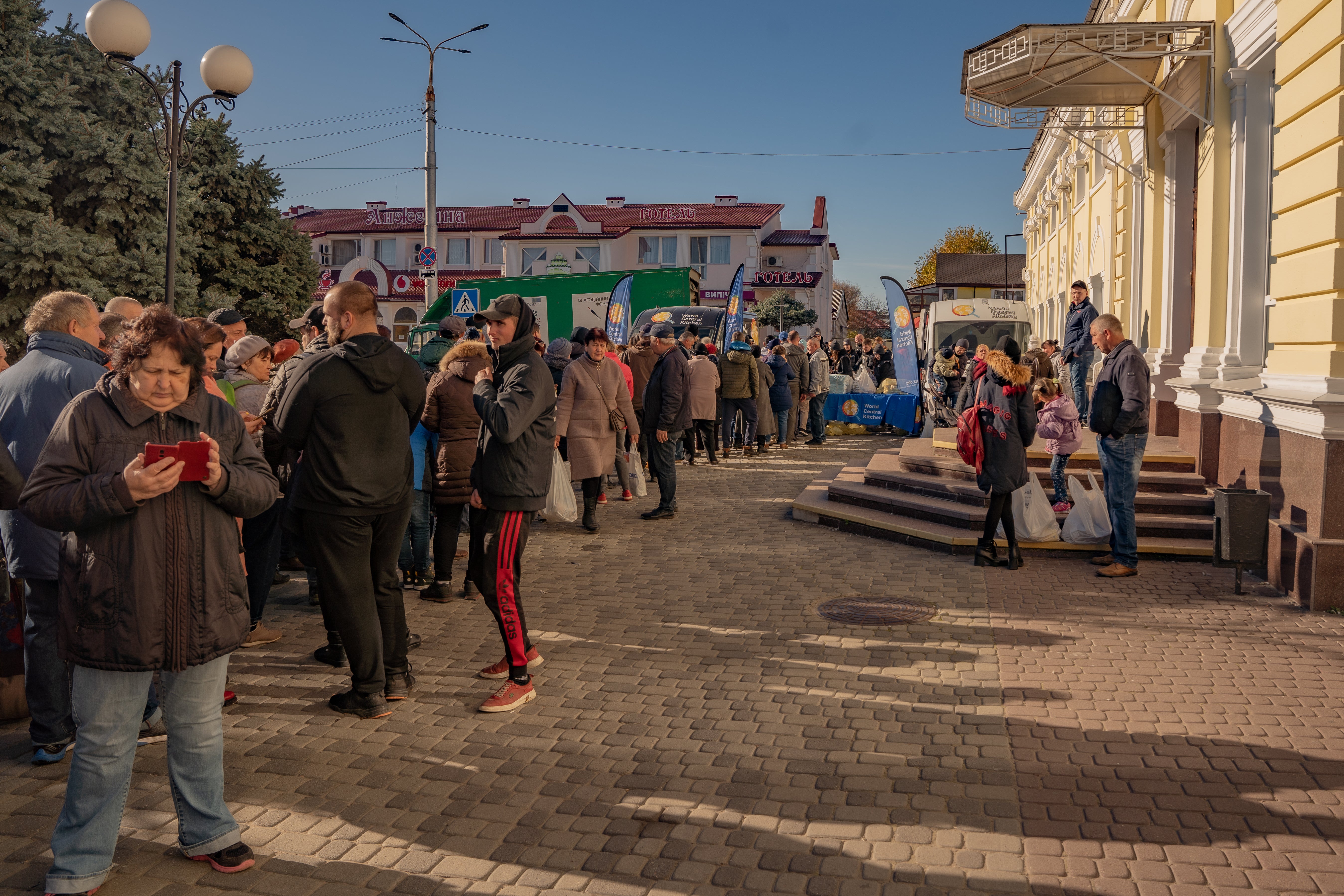
Yaroslav Yanushevych, the governor of Kherson, is also here, as are senior railway managers, international aid workers, engineers, doctors and volunteers, all busy at work.
“Until the actual moment we can run the trains, we are already here working,” Kamyshin, a father-of-two continues.
He explains how Kherson’s train terminal is open and functioning as a humanitarian hub while it waits for the carriages to start rolling in.
Residents cluster around the station’s Starlink internet connection points, some reaching out to family members for the first time in weeks to tell them they are alive.
The railway company has set up generators so that residents, deprived of electricity, water and gas for months, can charge their phones.
They have partnered with World Central Kitchen (WCK), an international food aid charity, whose workers are handing out food parcels to crowds of people waiting outside. Médecins Sans Frontières, or Doctors Without Borders (MSF) – another partner – is staffing a temporary station providing consultations and medication.
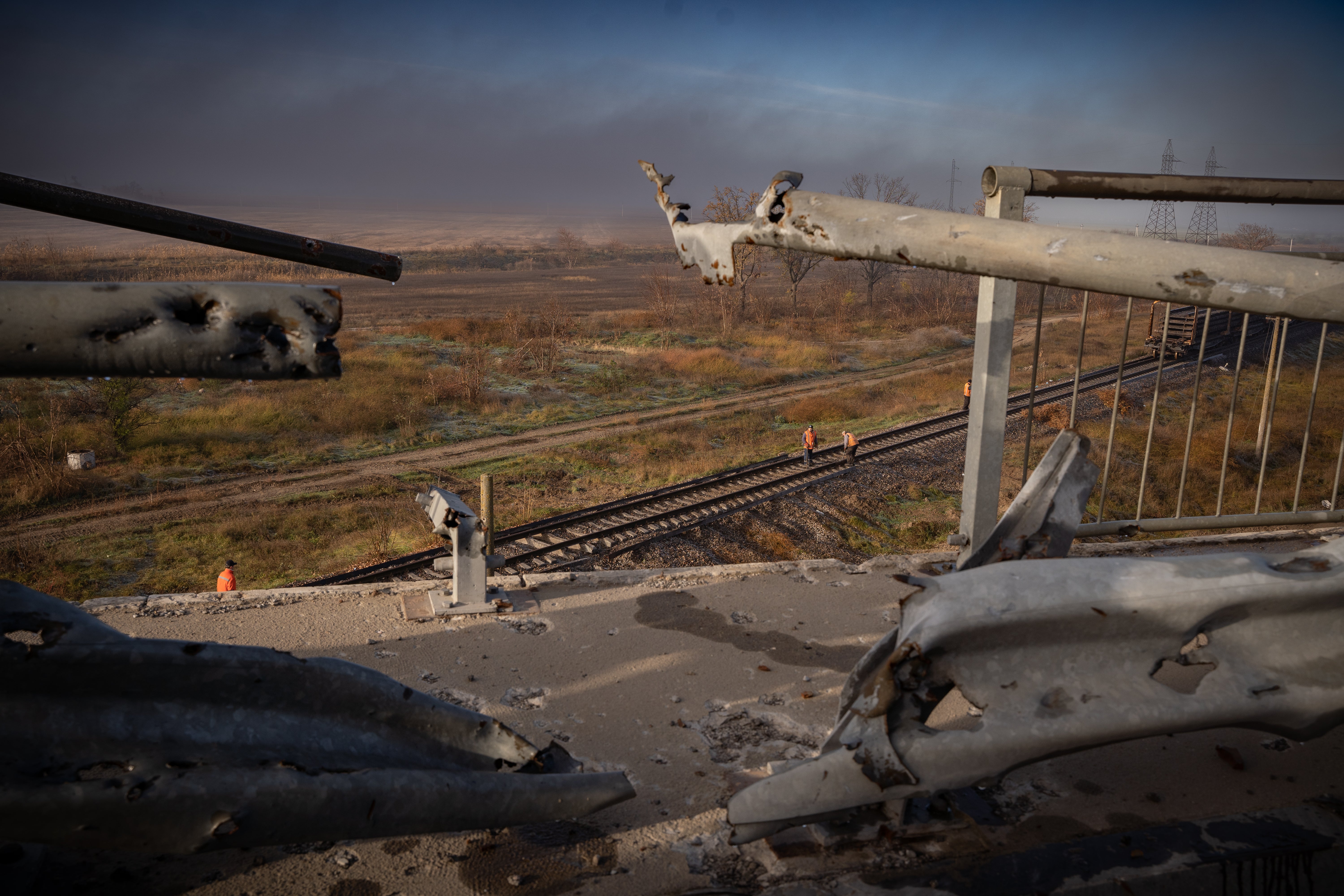
“We are the first ones to bring in food, to bring in medicines, to bring in generators,” Kamyshin continues. “For many Ukrainians the railway changes their lives. We are not just running trains, as you can see.”
Outside, residents who are crowded around a charging point say it is a lifeline.
“The opening of the track will make a huge difference for us. We have been cut off from the rest of Ukraine since March,” says Boris, 50, a local businessman who, together with his wife Tetiana, 44, are waiting for a food parcel.
Boris’s brother, Maxim, director of a local cultural institute, talks of how he spent four days in a Russian-held basement interrogation centre as they beat and tortured him for information.
When he was released he had to make the treacherous journey to Ukrainian-held territory by back roads through Russian checkpoints. The rest of their family is on the east bank of the river, which is still Russian-occupied. They have no idea if they are alive as there is no internet or mobile phone connection.
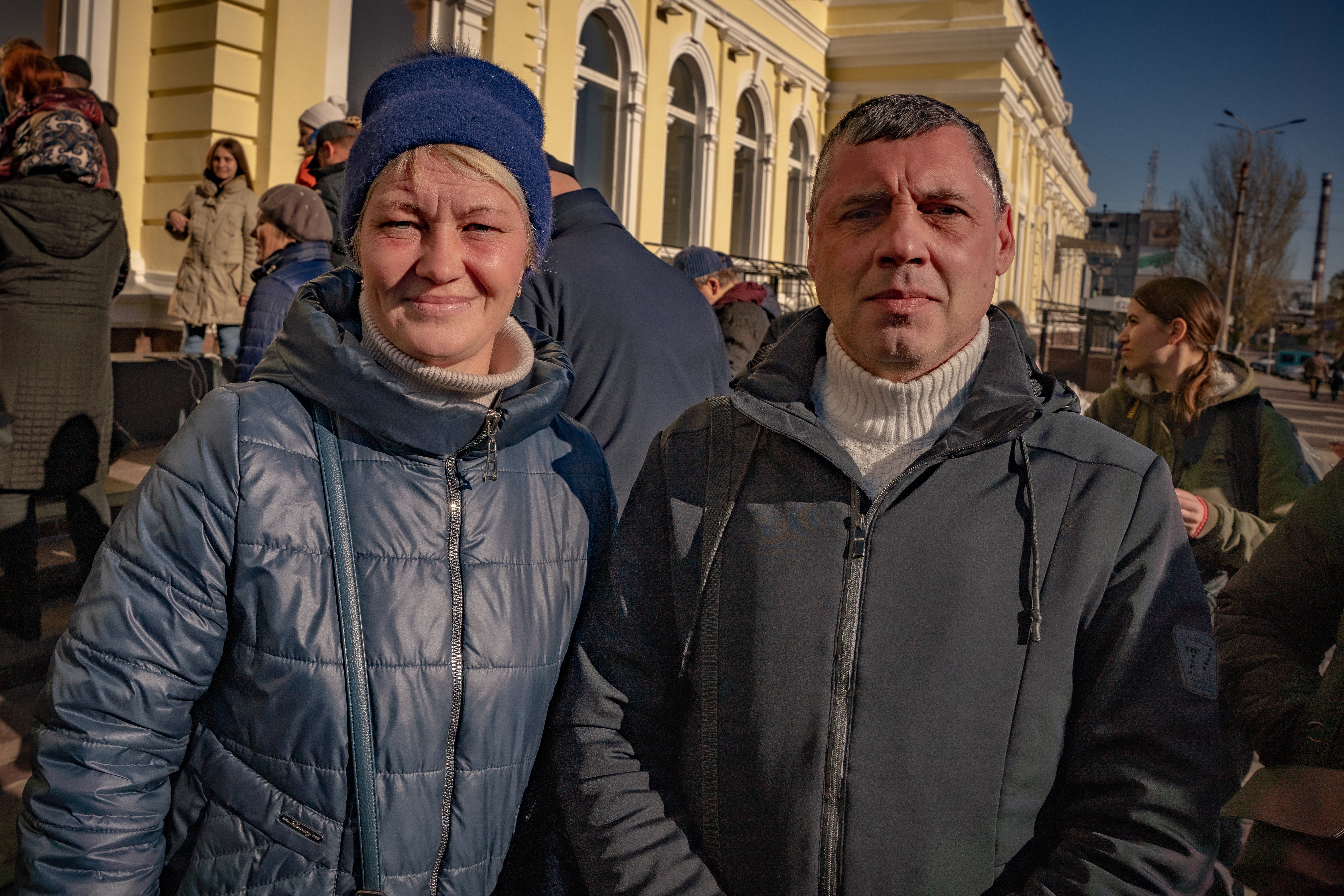
“We haven’t had electricity, water or a mobile phone network for so long. To have connection finally and a way in and out means a great deal,” Boris says with relief.
It has been quite a feat.
Kamyshin assumed his role as chief executive of the railways just four months before president Putin invaded Ukraine in February of this year. He was still technically in his probation period. It has quite literally been a baptism of fire.
His motto has been that the trains must keep running no matter what.
And because of this, Ukraine’s railway network has morphed into one of the most important life-savers in the conflict despite being under constant bombardment.
Like arteries, the tracks criss-cross the country, quickly becoming a major evacuation route for fleeing civilians and wounded soldiers when Russia launched the invasion, particularly given that roads were bombed and air traffic into Ukraine halted.
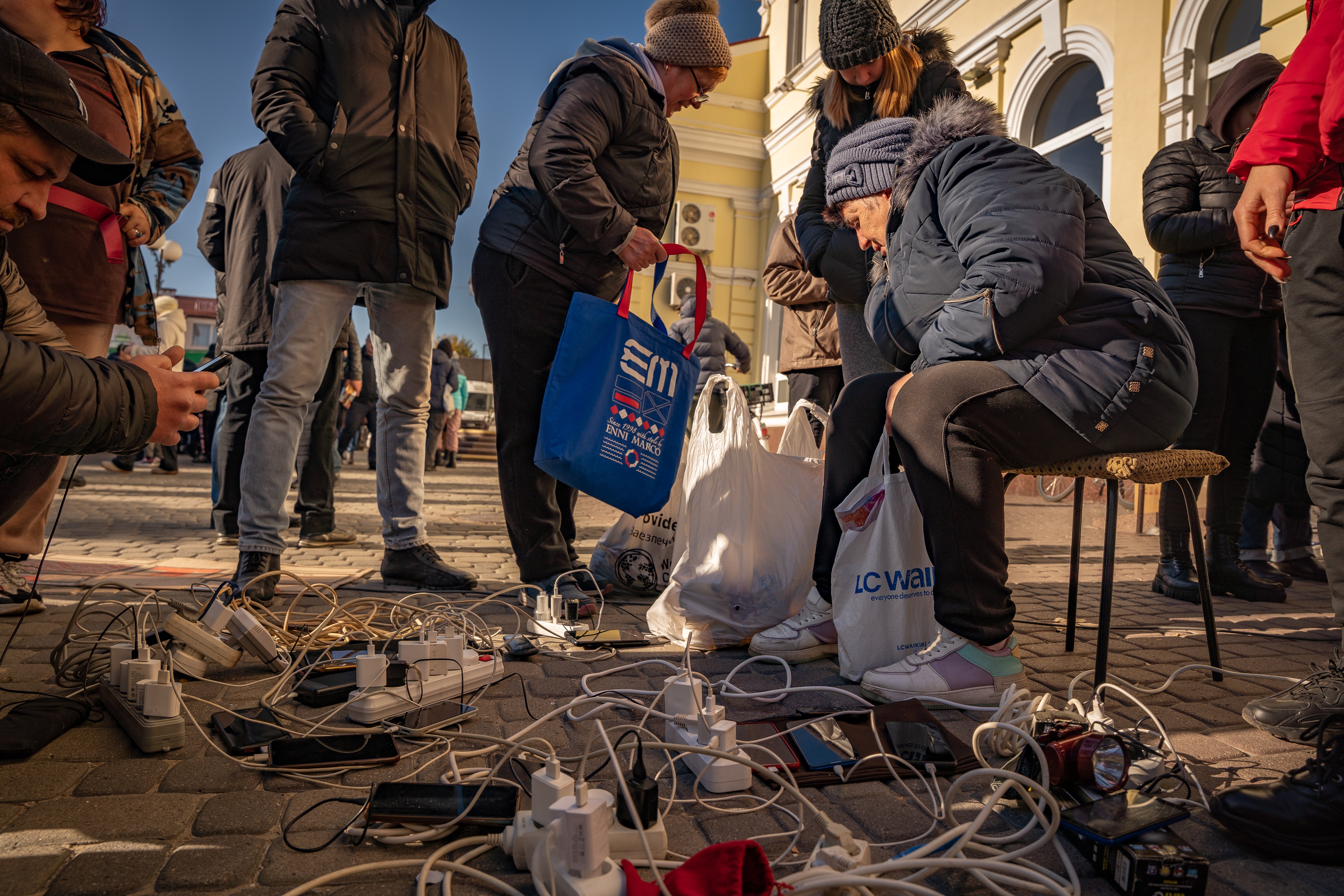
Ukraine’s trains – and their now famous blue and yellow stock – became one of the only ways out of the country.
At the beginning of the war, millions of terrified people piled into carriages to flee, beginning the largest refugee crisis in Europe since the Second World War.
Tickets were free. As many people as possible were squeezed on board. There were often extremely upsetting scenes, with families desperate to get on, storming carriages as incoming shelling sounded in the background.
Men of fighting age, who by law have to stay inside Ukraine, were filmed bidding tearful goodbye to their loved ones on the platforms.
Trains snaked through the country, turning off their lights in case they could be spotted by planes and drones. They drove slower so that if they came under shelling it would lessen the impact of a crash.
The railway company searched for more carriages to cope with the massive movement of people. Meanwhile, they ferried humanitarian aid, supplies and vital infrastructure to the worst-hit areas.
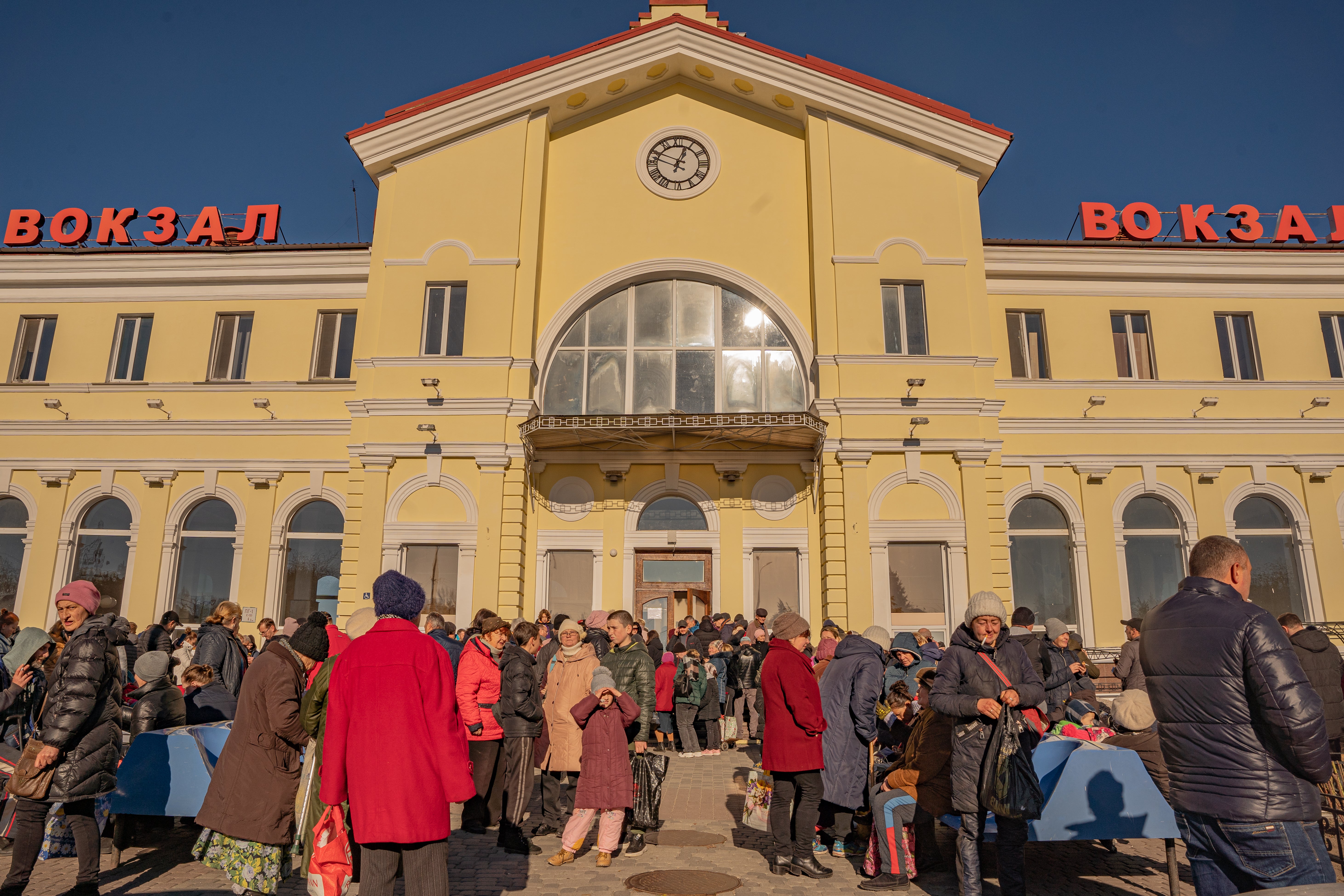
When Ukraine’s Black Sea ports were blocked, the trains became the only way to export its food and grain, and it was made all the more tricky by the fact that Ukraine uses a Soviet-era gauge track that is larger than that of the rest of Europe: a hangover from the USSR when the line was built and which the railway company hopes to change to further integrate the country with the rest of the continent.
For now, they want to keep the trains running for as long as they can and return to recently liberated areas as fast as they can. In Izyum, northern Ukraine, trains were running just four and a half days after the Russians were forced to beat a retreat.
But it has come at huge cost. Kamyshin tells The Independent that nearly 300 railway workers have been killed and more than 600 injured since the conflict erupted. The company has a workforce of 231,000 people, and those not located in occupied territories or those not evacuated still come to work. Senior management is believed to be on the target lists of Russian soldiers, their proxies and collaborators; they have to navigate that.
On 8 April, cluster munitions were used on the railway station in Kramatorsk city, in the eastern region of Donetsk, killing at least 60 people, many of whom were trying to evacuate. Kamyshin was at the railway station just the day before the attack.
Four months later, on 24 August – Ukraine’s independence day – 25 more people were killed in a missile attack on Chaplyne train station in the central-eastern Dnipropetrovsk region.
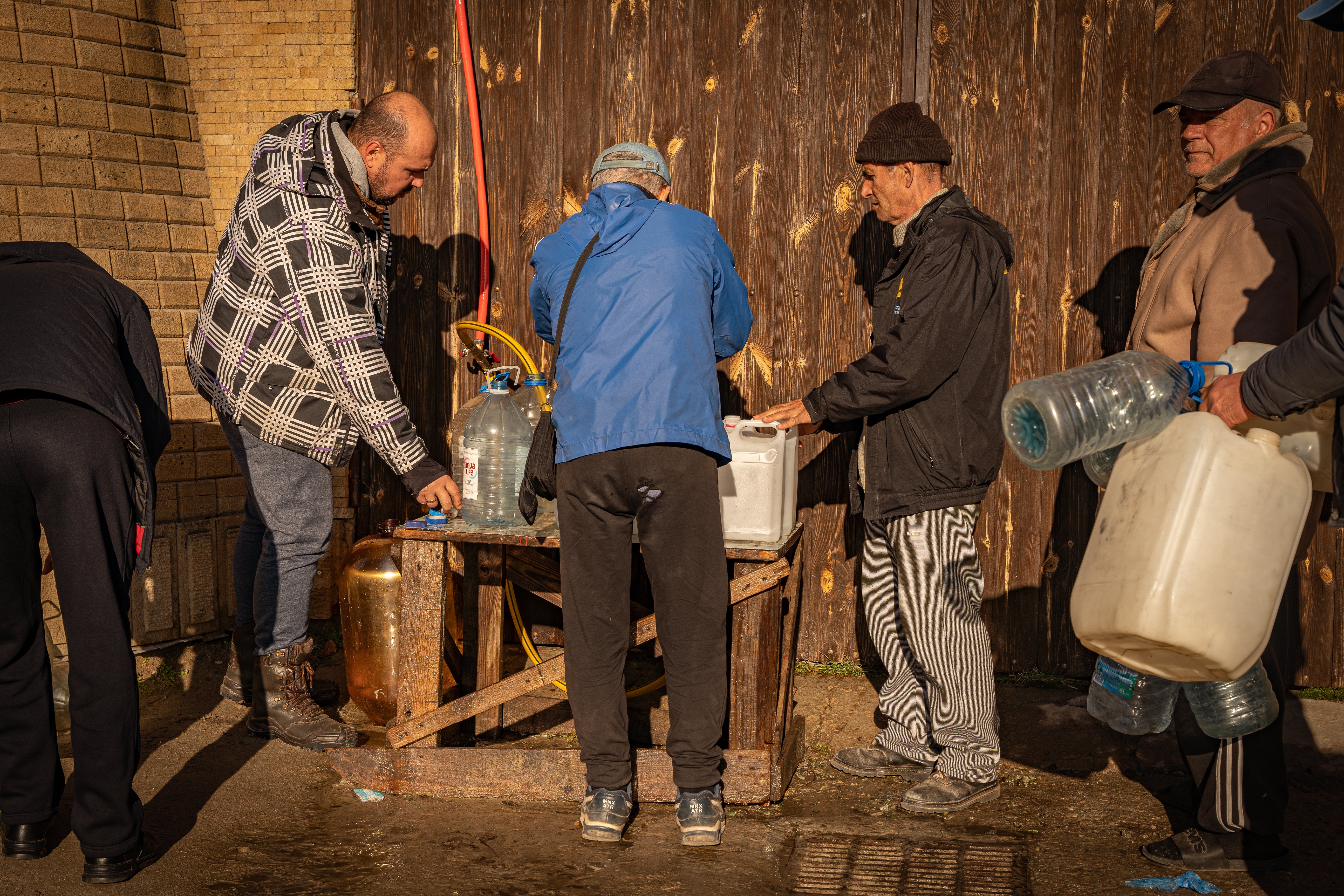
Russian forces also laced all the territory it captured and has since relinquished with anti-tank and anti-personnel mines as their soldiers pulled back. The railway workers say they specifically target critical infrastructure such as railway tracks. In the recently liberated areas, The Independent has been shown trip wires by demining teams: boobytraps are rife.
“The main danger for us today is the mines,” says Roman Chernitski, one of the railway managers responsible for infrastructure, who was also busy at Kherson train station.
“Just a few days ago, seven railway workers were wounded, some critically, by mines as they tried to fix the track to Kherson,” he says with a pained pause.
“This is the hardest part for us. In Ukraine there are no safe jobs.”
But despite the dangers, the Ukrainian railway company says it has so far fixed a total of 2,000km of track that were in the frontline or occupied areas.
Of the 60 main railway bridges that have been destroyed by Moscow’s bombardment, Chernitski says 20 have been renovated. Three bridges in Irpin, just north of the capital Kyiv – an area that saw some of the worst of the fighting early on in the war – are due to be opened next week.
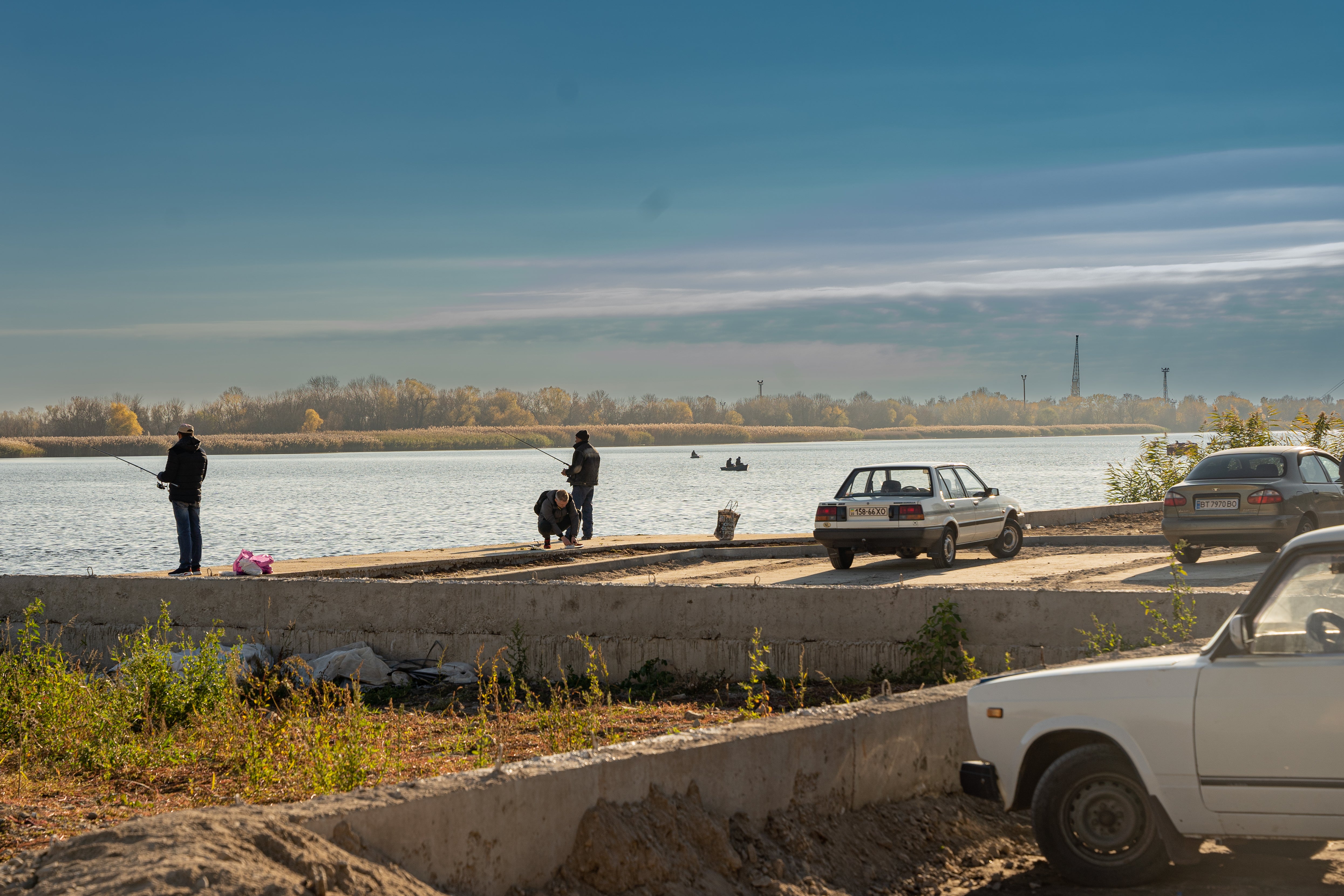
In Kherson, Chernitski says, they are mending 60 destroyed parts of the railway line. Twenty areas are already fixed, even though it’s been less than a week since Russian forces left.
Just outside the city on the bombed-out road from neighbouring Mykolaiv city, railway workers are busy working on a part of the line framed by apocalyptic destruction.
Missiles and artillery shells have chewed up the muddy landscape around them and incoming fire is still a risk. De-miners were busy in tandem, clearing the track to allow them to work. By the side of the road dozens of anti-tank missiles are lined in neat rows, cordoned off with red and white warning tape.
And now the main focus is going to be the bitter winter. In interviews with The Independent, Ukraine’s top energy officials have accused Russia of “energy terrorism” and of having unleashed a wave of attacks on power infrastructure the world has never seen. Rights groups like Amnesty International have alleged the attacks constitute a war crime.
Millions of homes have been plunged into darkness and cold, and water supplies have been halted in cities from Kherson to the capital Kyiv. This will be a deadly nightmare as temperatures continue to drop and the winter rolls in. On Wednesday and Thursday, Russia once again unleashed another torrent of missiles at energy infrastructure, plunging several cities, including the capital, into darkness.
And this is where railway stations will come in, says Kamyshin. He wants them to become the humanitarian heart of the cities and towns where they are located.
“For example, we have 10,000 stoves; we need just 2,000 for our stations, but we have got more in for the people,” he says, pointing to the makeshift wood-burning stoves, fashioned out of scrap metal, which can be stationed inside or outside homes.
“The stations will provide electricity, stoves, internet, food, medical supplies –everything.”
As the sound of incoming fire rumbles increasingly louder, he personally ushers crowds inside “so we don’t have a repeat of Kramatorsk”, he adds grimly.
“The railway station could be one of the only places where people can keep warm and get food in winter,” he says as families gather inside, around an adapter to charge their phones, immune to the deadly boom in the background.
“I have to be ready for everything and we have to keep running.”







